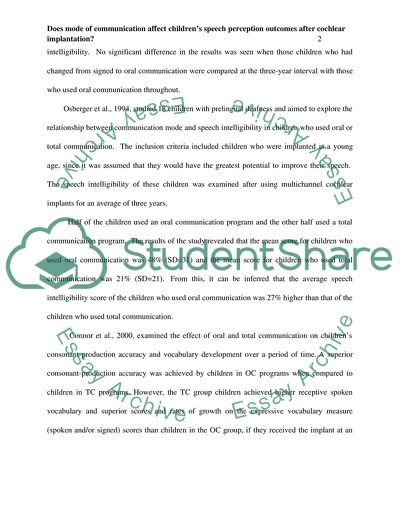Cite this document
(Does Mode of Communication Affect Childrens Speech Perception Outcomes Literature review - 1, n.d.)
Does Mode of Communication Affect Childrens Speech Perception Outcomes Literature review - 1. https://studentshare.org/health-sciences-medicine/1707761-does-mode-of-communication-affect-childrens-speech-perception-outcomes-after-cochlear-implantation
Does Mode of Communication Affect Childrens Speech Perception Outcomes Literature review - 1. https://studentshare.org/health-sciences-medicine/1707761-does-mode-of-communication-affect-childrens-speech-perception-outcomes-after-cochlear-implantation
(Does Mode of Communication Affect Childrens Speech Perception Outcomes Literature Review - 1)
Does Mode of Communication Affect Childrens Speech Perception Outcomes Literature Review - 1. https://studentshare.org/health-sciences-medicine/1707761-does-mode-of-communication-affect-childrens-speech-perception-outcomes-after-cochlear-implantation.
Does Mode of Communication Affect Childrens Speech Perception Outcomes Literature Review - 1. https://studentshare.org/health-sciences-medicine/1707761-does-mode-of-communication-affect-childrens-speech-perception-outcomes-after-cochlear-implantation.
“Does Mode of Communication Affect Childrens Speech Perception Outcomes Literature Review - 1”. https://studentshare.org/health-sciences-medicine/1707761-does-mode-of-communication-affect-childrens-speech-perception-outcomes-after-cochlear-implantation.


